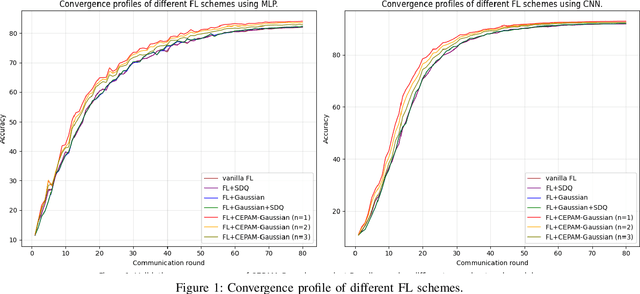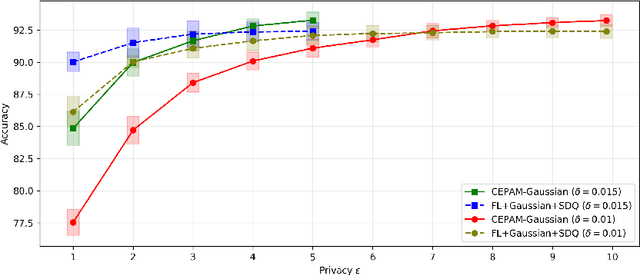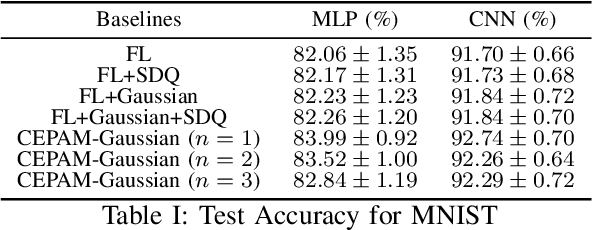Chih Wei Ling
Communication-Efficient and Privacy-Adaptable Mechanism for Federated Learning
Jan 21, 2025


Abstract:Training machine learning models on decentralized private data via federated learning (FL) poses two key challenges: communication efficiency and privacy protection. In this work, we address these challenges within the trusted aggregator model by introducing a novel approach called the Communication-Efficient and Privacy-Adaptable Mechanism (CEPAM), achieving both objectives simultaneously. In particular, CEPAM leverages the rejection-sampled universal quantizer (RSUQ), a construction of randomized vector quantizer whose resulting distortion is equivalent to a prescribed noise, such as Gaussian or Laplace noise, enabling joint differential privacy and compression. Moreover, we analyze the trade-offs among user privacy, global utility, and transmission rate of CEPAM by defining appropriate metrics for FL with differential privacy and compression. Our CEPAM provides the additional benefit of privacy adaptability, allowing clients and the server to customize privacy protection based on required accuracy and protection. We assess CEPAM's utility performance using MNIST dataset, demonstrating that CEPAM surpasses baseline models in terms of learning accuracy.
Rejection-Sampled Universal Quantization for Smaller Quantization Errors
Feb 05, 2024Abstract:We construct a randomized vector quantizer which has a smaller maximum error compared to all known lattice quantizers with the same entropy for dimensions 5, 6, ..., 48, and also has a smaller mean squared error compared to known lattice quantizers with the same entropy for dimensions 35, ..., 48, in the high resolution limit. Moreover, our randomized quantizer has a desirable property that the quantization error is always uniform over the ball and independent of the input. Our construction is based on applying rejection sampling on universal quantization, which allows us to shape the error distribution to be any continuous distribution, not only uniform distributions over basic cells of a lattice as in conventional dithered quantization. We also characterize the high SNR limit of one-shot channel simulation for any additive noise channel under a mild assumption (e.g., the AWGN channel), up to an additive constant of 1.45 bits.
 Add to Chrome
Add to Chrome Add to Firefox
Add to Firefox Add to Edge
Add to Edge